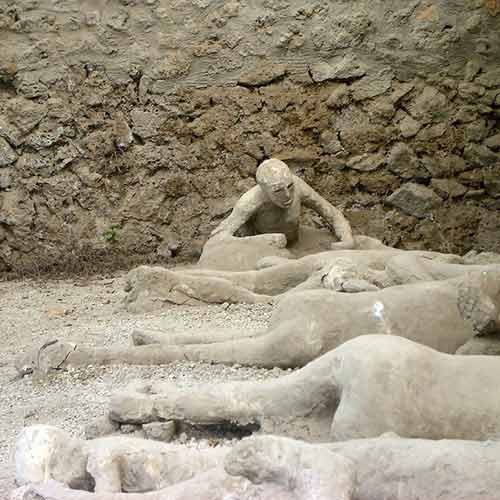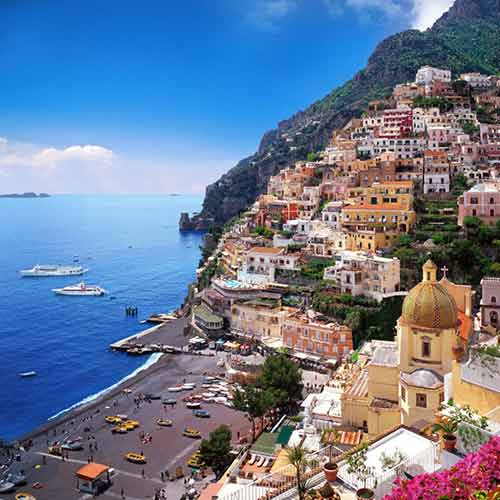




After an enormous devistation of the eruption of Vesuvius in AD 79, life came to an end in Pompeii. Much of what we know about Pompeii comes from the frescoes that adorn many of the houses, their rich colors looking as though they had been applied just yesterday. Pompeii was a place of relaxation, a comfortable city near the coast, filled with holiday homes, bath houses, theaters, and surrounded by a countryside rich in olive groves and vineyards.
However, despite the beauty of it all, anyone who visits the site will come away remembering the poignant forms of the inhabitants overtaken by the disaster. Men and women, mothers still hugging their children, slaves next to their masters, even domestic animals, stopped in their tracks two millennia ago and dramatically trasformed in an instant into statues.
The spring weather is perfect for visiting the site and there are fewer visitors in March. In March the high temperatures reach between 60 and 70 degrees F. Pompeii's rainy season is over by March, and temperatures are cool enough that you won't break much of a sweat while touring the ruins. To check the current weather in Pompeii click here.
Pompeii is 19 miles south of Naples and Capodichino Airport. From there, take the Circumvesuviana train to the archeological site. Take the A3 freeway by car, take the Pompeii exit, and follow signs for the excavations. Upon arrival, it's best to explore on foot. There is a bus and train between Naples and the Amalfi Coast. For more information, visit the Travel page.
The Hotel Amleto is in the historic center, a few steps from the ruins. Its rooms have touches of the Roman Pompeii with mosaics and polychrome marble.For a more comfortable and modern type of hotel experience, try the central Hotel Forum.
Il Principe restaurant has an elegant ambience and its menu includes some dishes from ancient Rome - modified for contemporary tastes. One of its specialties is vermicelli with garum (a popular Roman condiment). For a more family-friendly place to eat (and also for pizza-lovers) try the spacious Zi Caterina.

A visit to Pompeii starts at the Porta Marina. Walk along the Via Porta Mina, flanked by important ruins: the Temple of Venus and, a bit farther on, the Forum, where justice was admisistered. Carry on to the temples of Apollo and Jupiter and the macellum - the food market.
All of these surrounded by a great labyrinth of side streets. Other sites of particular interest include the Stabian Baths, the suptuous House of the Faun, with its famous mosaic of Alexander the Great, the House of the Vetti, adorned with striking paintings, and a little outside the city, the Villa dei Misteri, with a famous cycle of frescoes linked to the cult of Dionysus.

The Amalfi Coast is one of the most famous and specacular stretches of coastline in the Mediterranean. Start at Sorrento and and round the cape on the winding coastal road, enjoying the outstanding scenery that comes into view at every curve. Positano is a real pearl of a village, perched above the sea.
Carry on to Amalfi, famous for its cathedral at the top of a long and impressive flight of steps, and go as far as Ravello, in one of the finest positions on the coast. Don't miss the marvelous view that unfolds from the gardens of the Villa Rufolo, in the middle of the village.